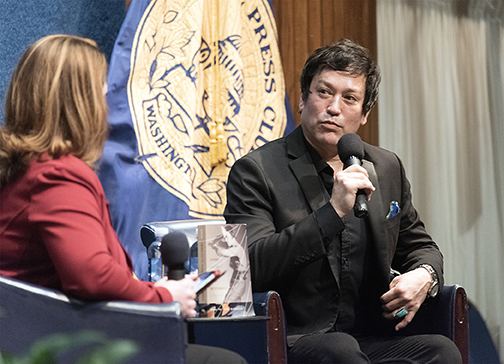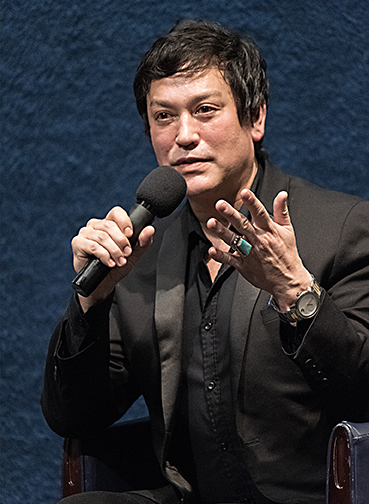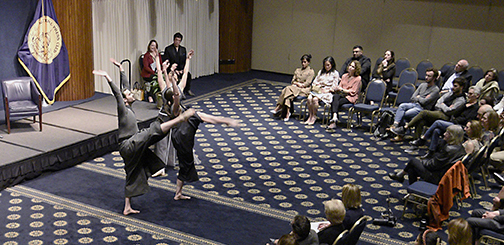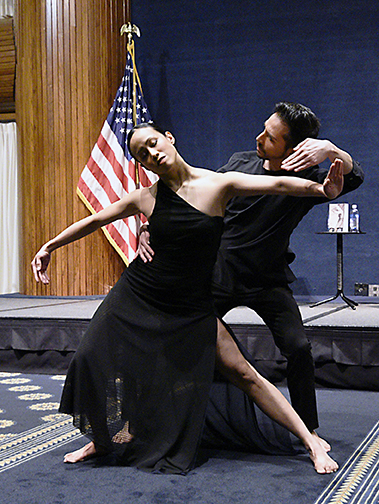Burgess, a renowned choreographer called “the poet laureate of dance” by The Washington Post, turned the image of darting women into a work he named “The Shadow.” Having studied the Egyptian Book of the Dead, he asked himself, “What happens to someone who lived under a veil her whole life at the moment of death?”
The artist was joined by five members of the Dana Tai Soon Burgess Dance Company who performed three works. Joan Ayup danced “The Shadow” in a costume and veil the color of desert sand. The dancer contorted in frantic spasms, trapped, afraid, and monstrously beautiful. At the end, she lifts her veil. We see her face. She is free.
Burgess discussed growing up in a largely Hispanic community in Santa Fe, the child of a White father and a mother of Korean descent. His parents were visual artists, active in the abstract art community. Seeing their creative process, he began to view the stage as a canvas and the dancer’s movements as brush strokes.




